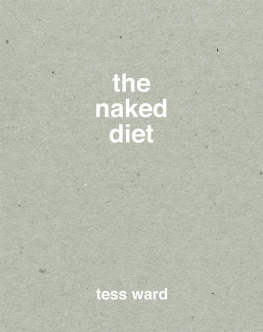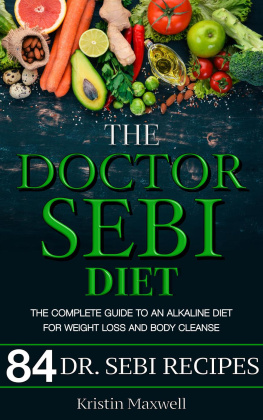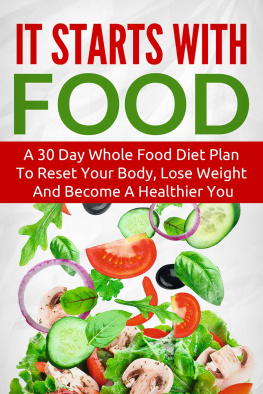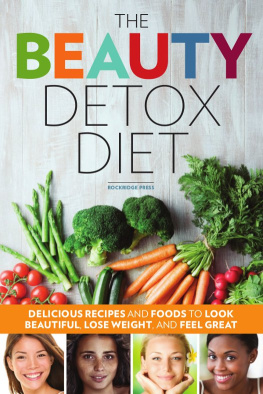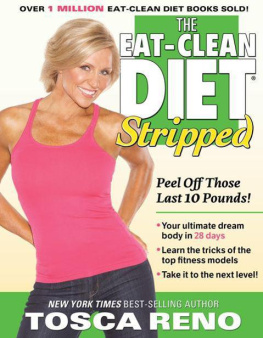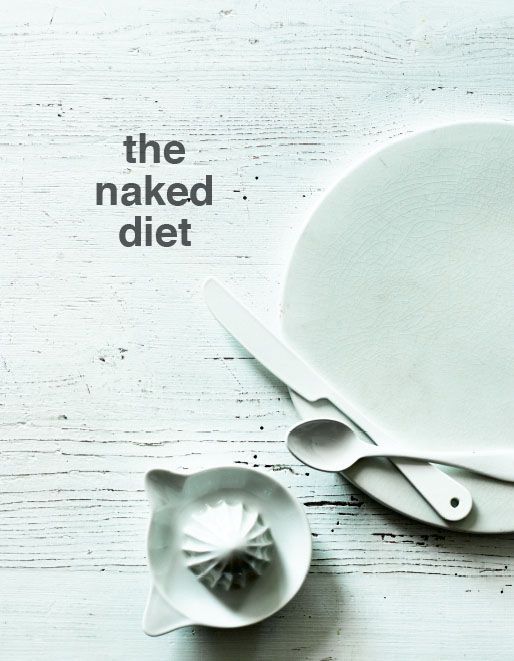

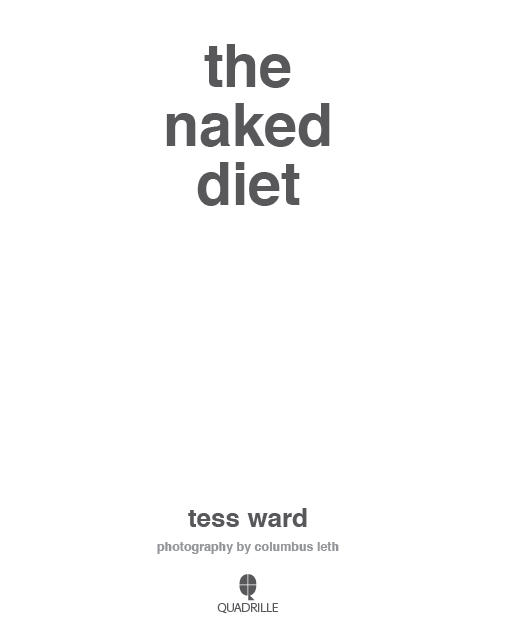
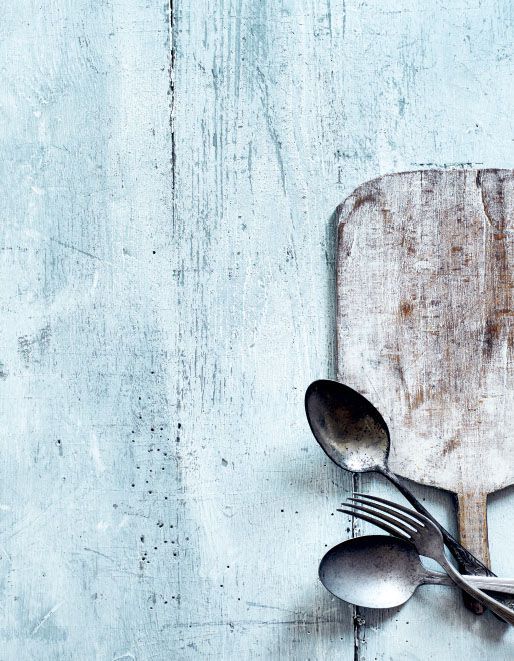
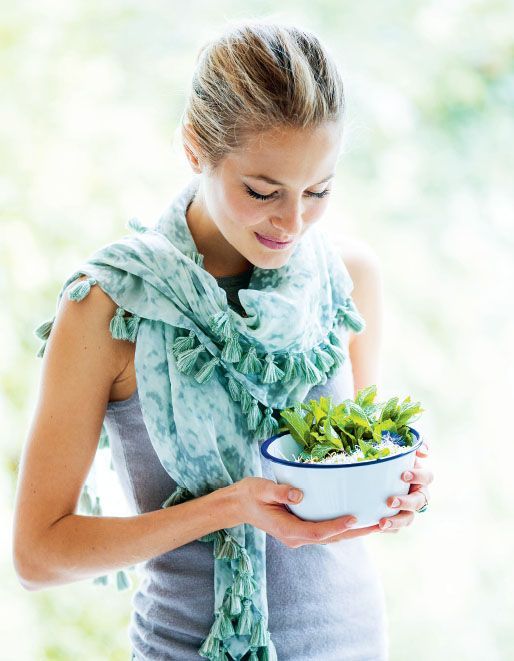
introduction
the idea
Over the years the word diet as we understand it has changed. the naked diets interpretation is based on the Latin origins of the word diata, meaning way of life. To me a diet is exactly that. Not a quick fix, but a sustained way of eating that naturally supports our overall health and happiness.
Few people I know would claim that they follow their ideal diet, although this seems to be what everyone aspires to. Many of us still subscribe to the idea of diet in the short term, and its promise to change, help or improve us. Lose the tummy, have slimmer thighs, a tighter bum, because it will make us happier, right? Why else diet other than to improve our quality of life in some way. So many of these unrealistic regimes claim to do this and they may well succeed in the short term. But anything beyond the initial starve yourself for a few weeks and lose weight, goes uncovered. In fact, any form of longevity is pretty much ignored, meaning the dieter ultimately ends up at the bottom of the heap, feeling worse than they did before they started. Too many diets are based too heavily in theory and not in practice. What works for one person is completely different for another. Nutrition and diet is an area full of contradictory information and evidence, there simply isnt a perfect diet, or one diet that fits all; instead, its about finding the best balance in ones own body.
The most important thing is to have a balanced understanding of what our own body truly needs. the naked diet moves away from processed and refined foods, unrealistic diets and fad regimes, instead it is about eating food in its most naked form.
my experience
A year ago, a restricted diet was something I was all too familiar with. Not for weight, but for health reasons. Aged 18, I spent a month travelling in India. On the way I picked up a parasite, that I was to live with for the next five years. Over this period there were repeat visits to doctors and specialists. I was diagnosed with post-infectious IBS, given more antibiotics than a dairy cow, and put on a restrictive diet. It wasnt until I met Humphrey Bacchus, a clinical nutritionist and medicine practitioner, who finally diagnosed my problem.
The recipes in this book are a compilation of the foods I have uncovered and created on my journey back to full health. The recipes have been designed to support and fuel your body, encourage optimal health, through simple, delicious and stripped back recipes.
this book
This book is all about eating food in its purest form. the naked diet celebrates creativity in cooking and all the recipes are efficient, practical and packed full of taste. They have been inspired by all the wonderful chefs I have worked with and the countries, cuisines and restaurants I have been to. I hope you find my naked dishes as pleasurable to make, eat and use as I have found discovering and creating them.
Cook naked, eat happy and youll never have to do the dreaded diet again.
naked broths + stocks
Broth is typically made with bones, and can contain a small amount of meat adhering to the bones. As with stock, bones are typically roasted first to improve the flavour of the broth, which is simmered for a long period of time (often in excess of 24 hours) whereas stock is simmered for 34 hours. Broths long cooking time helps to extract as many minerals and nutrients as possible from the bones. At the end of cooking, the minerals have leached from the bones into the broth and the bones crumble when pressed between your thumb and forefinger.
broths goodness
Broths are extraordinarily rich in nutrients particularly minerals and amino acids, especially arginine, glycine and proline. Glycine supports the bodys detoxification process and is used in the synthesis of haemoglobin, bile salts and other naturally occurring chemicals within the body, as well as supporting digestion and the secretion of gastric acids. Proline, especially when paired with vitamin C, supports good skin health.
Bone broths are also rich in gelatin, which improves collagen status, that supports skin health and also aids digestive health.
stocks goodness
Stocks are also typically made with bones, they contain a small amount of meat and are typically simmered for less time than a broth, 34 hours. Stock is rich in both minerals and gelatin.
Chicken stock inhibits neutrophil migration; it helps mitigate the side effects of colds, flu and upper respiratory infections.
basic roast chicken stock/broth
1 leftover roast chicken carcass
vegetable scraps (celery leaves, onion trimmings, leeks, fennel, carrot peelings, garlic etc)
2 bay leaves
few thyme sprigs
handful of parsley stalks
for asian chicken stock/broth:
5cm piece of fresh ginger
1 star anise
34 fresh cayenne (or other) chilli peppers
unpeeled cloves of 1 whole garlic bulb, bashed
10cm lemongrass stalk (optional)
Put the chicken carcass, vegetable scraps and herbs into a stockpot or for asian stock/broth omit the vegetables and herbs and add the asian ingredients.
Pour in enough cold water to cover the carcass by about 5cm, about 1 litre. Cover, bring to the boil, then reduce the heat to low and simmer for 3 hours (for stock) or for 24 hours or longer (for broth), adding water now and then if making broth until the bones become flexible and rubbery, and skimming off any scum that rises to the top, from time to time.
Strain through a fine mesh sieve and pour into jars. The broth should gel, but it is not necessary. Store in the fridge for 23 days, or decant into freezer containers and freeze for up to 1 month.
makes about 800ml
beef stock/broth
Roasting the bones ensures a good flavour in the resulting beef stock. If making soup, its wise to serve this stock very hot as it may gel once it cools.
2.83kg grass-fed beef bones
vegetable scraps
23 bay leaves
few thyme sprigs
couple of rosemary sprigs
Preheat the oven to 200C/ Gas Mark 6. Rinse the bones, dry and spread in a roasting tin (they should fit in a single layer).
Roast for about 1 hour, then remove from the oven and drain off any fat. Add the bones to a stockpot along with vegetable scraps. Add cold water to cover, about 1 litre, cover, bring to the boil and add the herbs. Turn down the heat and simmer, covered, for at least 3 hours (for stock) and up to 24 hours (for broth), skimming off any foam.
Strain through a mesh sieve and pour into jars. The stock should set like gelatin and the fat should rise to the top. Remove the fat and reserve for cooking. To serve as soup, scoop out the gelled stock and reheat.
Next page
